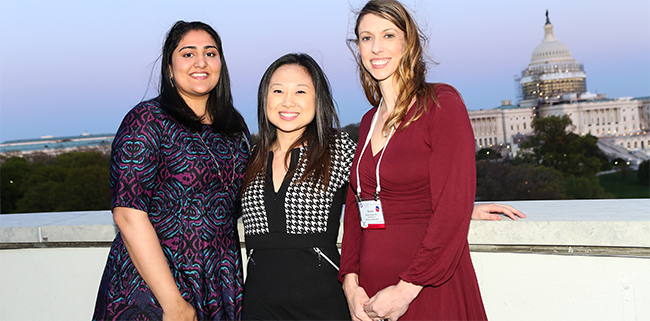In medical school, my favorite attending warned me there are some patients you carry with you forever.
For one reason or another — their story, their pathology, their personality — something resonates with these patients that makes them unforgettable. She called these patients her “collection.” Just as she warned, I am building my own collection of patients who are always with me. Every year, I add one or two new ones to the group; however, there is one in particular — my very first patient — who will forever hold the highest place in my collection.
It was my first night of primary call. She was a 55-year-old African American woman who presented to the ED after noticing vision loss in her left eye. A quick history revealed a strong family history of glaucoma, but she assured me she herself didn’t have it.
“I’ve seen my eye doctor every year for the last 15 years, and he has never mentioned glaucoma,” she said. “I just saw him a few weeks ago, and he said everything looked okay.”
The IOP in her left eye was 49, she had a large relevant afferent pupillary defect and her optic nerve exam revealed near end-stage glaucoma.
I turned to my senior who was on buddy call with me and asked, “How is this possible? She just saw her eye doctor a few weeks ago?”
Advocate for your patients. As it turns out, she had been regularly seeing an optometrist for glasses, but her exams did not include regular IOP checks, dilated exams or visual field testing. Her vision loss was due to acute recognition of a chronic problem, something we commonly see in patients with undiagnosed advanced glaucoma.
The next day, our chair mentioned in passing that a bill making its way through the state legislature would drastically expand the scope of practice for optometrists in our state. With my patient fresh in mind, I couldn’t help but think of her as he talked about this bill. I was drowning in my first week of residency just trying to keep my head above water, avoid blinding anyone and not make a fool of myself in morning report. But somewhere in that craziness I found five minutes to send an email to the members of our state health care committee who were hearing the bill.
Advocate for your career. After that, my experiences with advocacy took off. I was sponsored by the Utah Ophthalmology Society to attend the Academy’s Mid-Year Forum 2016 as part of the Advocacy Ambassador Program.
Despite a monstrous case of “imposter syndrome,” I spoke out in my private sessions with senators and representatives and was amazed that they actually listened to what I was saying. I also met Academy leaders who encouraged me to get more involved, and through those connections, I was asked to speak at the Academy’s annual meeting’s Young Ophthalmologist Program about my advocacy experience.
Upon graduation, I then joined my state ophthalmology society. And when our legislative chair stepped down a few months ago, I wanted to know how to help and they ended up promoting me to the open position. Ultimately, with the connections I forged during these experiences, I joined the Academy’s YO Info editorial board this year.
Build your own collection. The YO Info newsletter does have an astonishingly high open rate among our target audience; however, the advocacy articles consistently garner the fewest number of reads. And I get it. In your first year of residency, you are worried about surviving without blinding anyone. In your second year, you are worried about your OKAP score. And in your third year, you are securing a fellowship or finding a job.
Afterwards, you are building a practice, paying off loans and catching up on the life you put off living during a decade of training. At this stage in our life, our resources are limited and our time even more so.
That is exactly why advocacy is so important. The years we spend in residency — the blood, sweat and tears we expend during training — are what separates us from our optometry counterparts. Allowing optometrists to gain legislative privileges devalues everything we worked so hard for during residency and fellowship.
In so many ways, my very first patient changed the course of my career, and for that I am forever grateful. She allowed me to think beyond my residency bubble at the very beginning of my training, and to realize that my responsibility to patients doesn’t end with their clinic visit. I encourage you to open up to all the places your patients may take you. Build your collection. And hopefully that process will bring you inevitably to advocacy.
 |
|
Dr. Simpson pictured right during her visit to the Capitol as an Advocacy Ambassador Program participant, Mid-Year Forum 2016.
|
Make an Impact through OPHTHPAC® and the Surgical Scope Fund
Stay engaged in state and federal advocacy with these quick tips:
1. Engage with your state ophthalmological society. Your state society fights for laws that protect surgery by surgeons, ensures patient safety and empowers lives. https://secure.aao.org/aao/Rosters/State-societies
2. Become a Congressional Advocate. Develop a personal relationship with your representative in Congress. Text CONGA to 51555.
3. Follow efforts in your state at www.safesurgerycoalition.org and on social media.
4. Text EYEYO to 51555 to receive federal advocacy updates in the palm of your hand.
5. Learn more about OPHTHPAC® and the Surgical Scope Fund by visiting www.aao.org/advocacy.
|
* * *
 Rachel Simpson, MD,
Rachel Simpson, MD, is a glaucoma specialist in Salt Lake City, Ut., and joined the
YO Info editorial board in 2020.